share on
Companies with higher reported levels of employee engagement are much more likely to have an internal definition of DE&I.
Diversity, equity and inclusion (DEI) strategies continue to evolve across organisations, and while the benefits of diversity are often apparent to anyone implementing new policies, they can often be difficult to quantify.
Aon in its 2022 Global Diversity, Equity and Inclusion Survey report asked respondents to identify the current level of engagement of their employees. Using these responses, it was able to identify positive relationships between DE&I policies and employee engagement.
The report showed 74% of companies have an internal DE&I definition/ policy. Highly engaged companies have such a definition 82% of the time, compared to 65% for companies with low engagement.
Policies can be designed to be inclusive of various groups, including age, disability status, ethnicity, gender, gender identity, mental health, parental status, religion, sexual orientation and veteran status
Moreover, 68% of companies with high employee engagement have a broadly defined DE&I plan, covering six or more categories. By comparison, only 54% of companies with low engagement have a broad definition of DE&I.
This is what the report showed about specific DE&I categories.
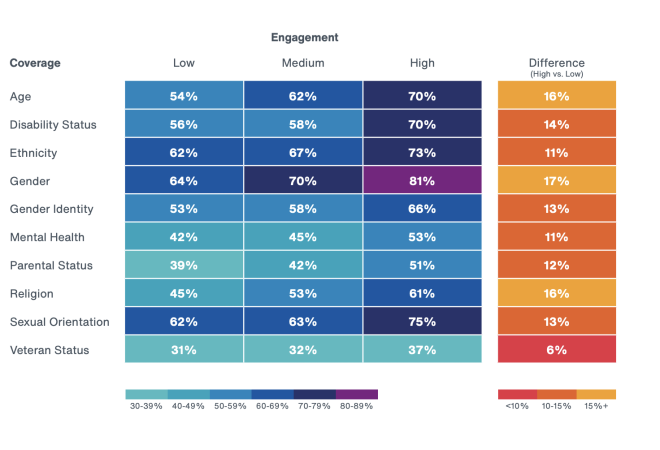
Age
Companies in EMEA (53%) were the highest to report engagement of older talent in mentorship programmes to provide guidance to younger talent. North America and the Global trends trailed behind with 50% and 45% respectively, followed by APAC at 43% and LATAM at 40%. When it came to providing flexibility in designing of roles, location and working hours, it was APAC and North America who led the trend with 78% and 77% respectively of companies reporting they do, followed by EMEA 68%, globally 66%, and LATAM 55%, respectively.
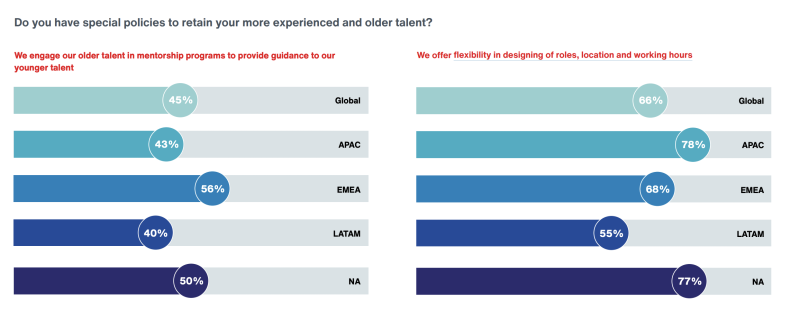
Disability
Two in five (43%) of companies in both EMEA and APAC offer workplace adjustments to employees with disabilities. Changes in policies include sickness-absence policy and additional breaks during work. Globally, the average was at 42% and once again LATAM trailed in policy with 37%. However, North America was streaks ahead of the rest with 67% of companies reporting that they do so.
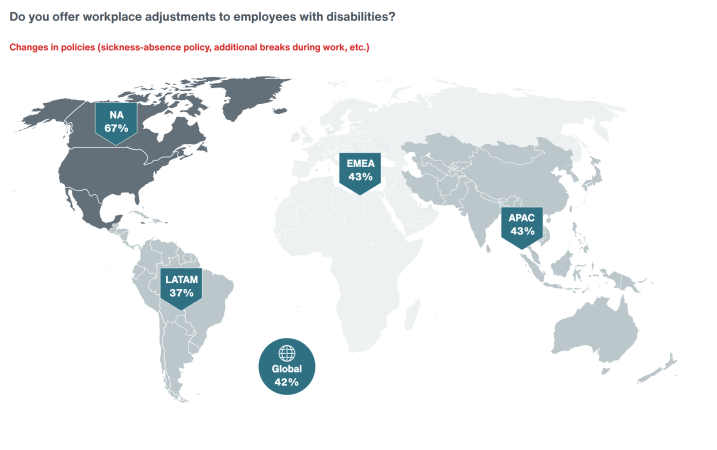
What about policies around changing working practices including flexible working hours, modifying shift patterns, and shorter working hours? Once again, North America led in this trend with 78% of companies reporting they do, followed by APAC 70%, EMEA, 60%, Global 58%, and LATAM, 46% respectively.
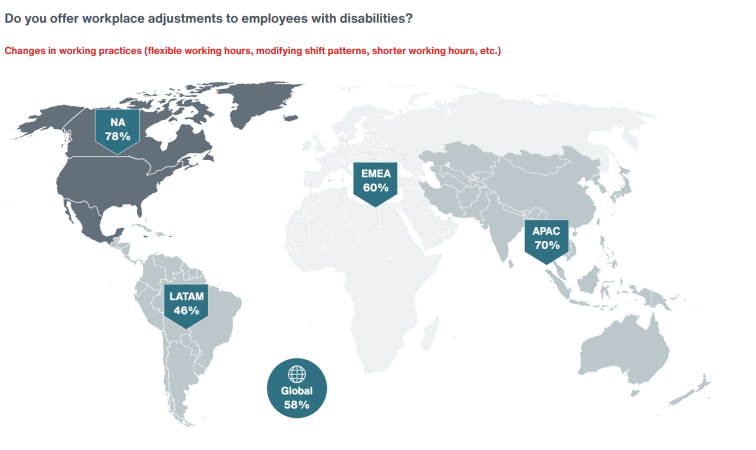
Health
However, LATAM lead the way for companies offering additional health coverage to high income employees or executives at 58% as well as to low income employees at 11%, the highest of all regions. APAC had the lowest reporting of giving low income employees additional health benefits with just 3% saying they do. It was also the lowest when it comes to high income or executives receiving additional benefits, with only 20% of companies in APAC offering this benefit.
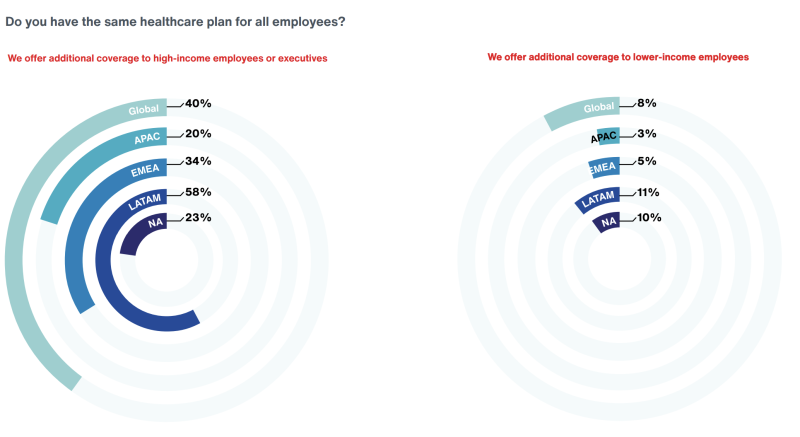
When it comes to mental health, companies in North America led the way in access, with 87% reporting access to psychiatrist as a mental healthcare service they provide across the care spectrum and 78% offering in-patient mental health coverage. APAC trailed in this department too, with 25% reporting access to a psychiatrist and in-patient mental health coverage, the lowest of all the regions surveyed.
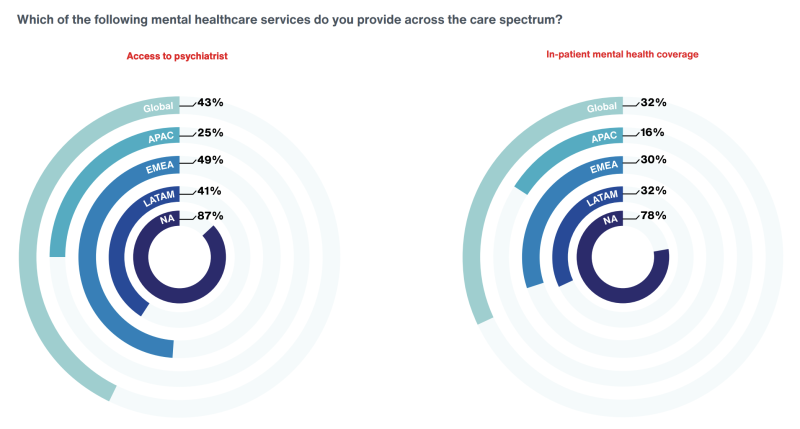
There are number of areas in family support that companies in APAC could consider as they lag other regions when it comes to holistic DE&I policies. According to the report only 5% of companies in APAC offer infertility treatments coverage compared with more than half (53%) in North America. However, APAC does fare better when it comes to parental or elderly relative health insurance (company or employee paid) with 19% of companies offering this perk, behind EMEA with 24%, global and LATAM both with 21%.

Family
When it comes to non-insured family support benefits, companies in APAC once again trailed in both backup care vendors and childcare assistance such scholarships, financial support for books, and school supplies with just 3% and 10% of companies respectively offering these benefits. In contrast, 24% of employers in LATAM offer backup care vendors and 29% of offer childcare assistance, the highest in the world.
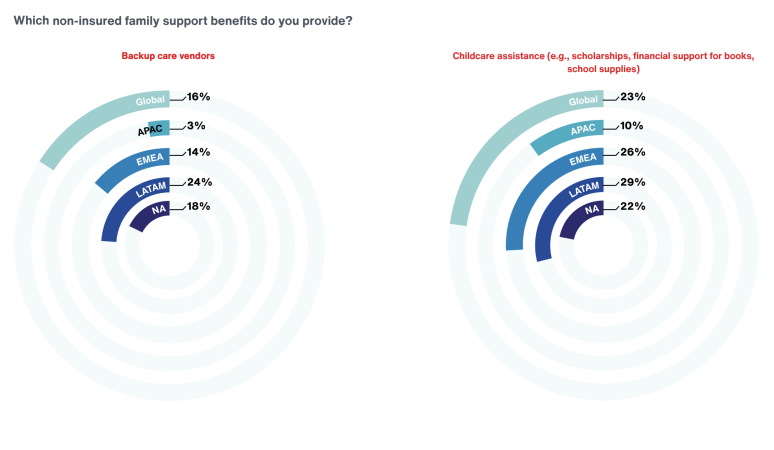
Family allowances, for example allowance for day care, partnerships/discounts for elderly homes followed the same trend. Just 6% of APAC companies reported this perk. Meanwhile more than a third (37%) of companies in LATAM report providing it.
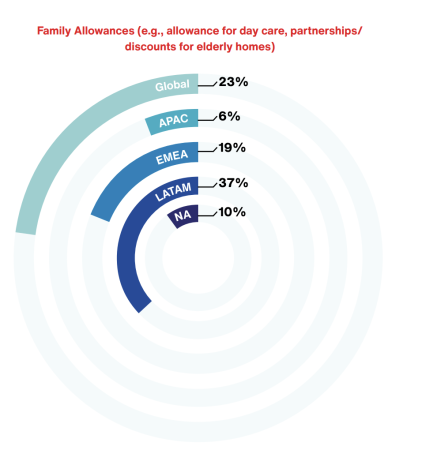
Miscarriage/still birth and leave for adoption/surrogacy are the most common family-related leaves offered globally. Across regions, the trends are slightly different, with Asia Pacific leading in offering caregiver and miscarriage leave, and North America leading with adoption and surrogacy leave.
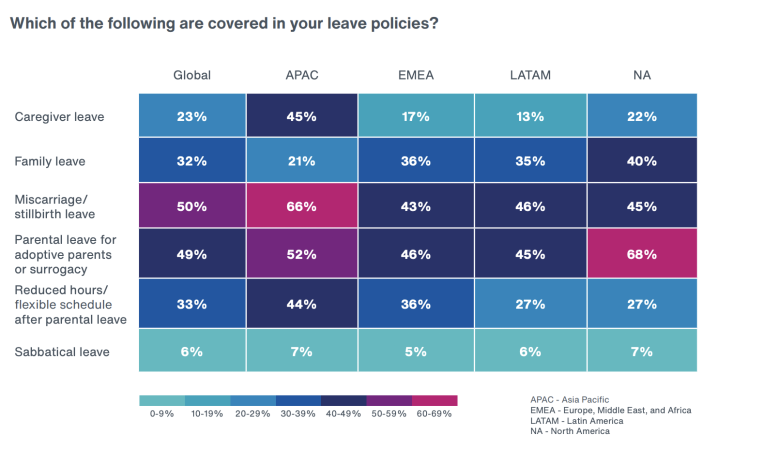
The report was conducted over the third quarter of 2022, where Aon surveyed more than 1,200 rewards, benefits and DE&I leaders representing 55 countries worldwide.
All images / Aon
Follow us on Telegram and on Instagram @humanresourcesonline for all the latest HR and manpower news from around the region!
share on


